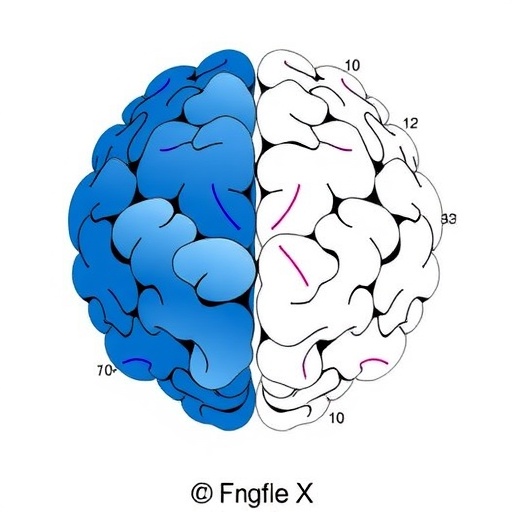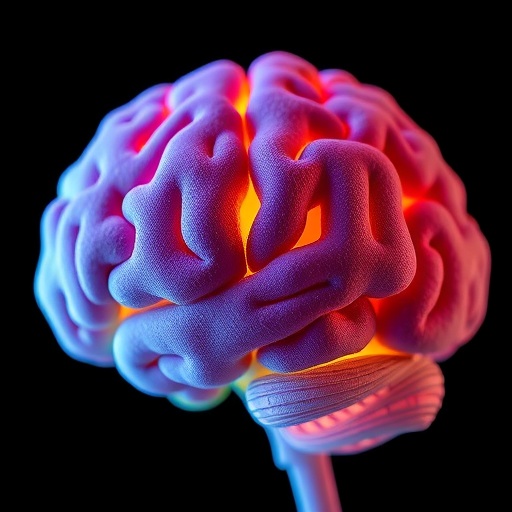Adolescence represents a delicate period marked by profound biological, cognitive, and psychosocial transformations, making it a critical window for mental health interventions. Among the most troubling issues confronting this demographic is self-harm, a complex behavior associated with a heightened risk of suicide and other adverse outcomes. Recent epidemiological data have indicated an alarming rise in self-harm rates among young people, prompting urgent calls for research into modifiable risk factors that could mitigate this trend. In this context, sleep disturbances have emerged as a potential key player, given their pervasive presence in adolescent populations and their deep connections to emotional regulation and executive function.
A groundbreaking study recently published in the Journal of Child Psychology and Psychiatry explores the longitudinal relationship between various sleep parameters and self-harm behaviors in adolescents. Led by researchers from the University of Warwick and the University of Birmingham, this investigation leverages the robust dataset provided by the Millennium Cohort Study, which tracks a nationally representative sample of young people in the United Kingdom. By analyzing sleep patterns and self-harm reports at ages 14 and 17, the study delineates how sleep insufficiencies and disruptions not only correlate with concurrent self-harm but also predict future risk.
The study systematically evaluated over 10,000 teenagers on multiple dimensions of sleep quality and quantity. Participants reported their total sleep duration on school nights, the latency period required to fall asleep, and the frequency of nocturnal awakenings—a multifaceted approach that surpasses the simplistic notion of just “hours slept.” This comprehensive assessment allowed the researchers to move beyond mere associations toward identifying specific sleep disturbances that may have mechanistic roles in fostering self-injurious behaviors.
.adsslot_4FB3TcLKXd{ width:728px !important; height:90px !important; }
@media (max-width:1199px) { .adsslot_4FB3TcLKXd{ width:468px !important; height:60px !important; } }
@media (max-width:767px) { .adsslot_4FB3TcLKXd{ width:320px !important; height:50px !important; } }
ADVERTISEMENT
Key findings from this large-scale analysis revealed that shorter sleep duration on school days independently predicted self-harm both at the time of assessment and three years later. Similarly, prolonged sleep onset latency and frequent night awakenings were robustly associated with heightened self-harm risk across both time points. These results persisted even after controlling for several confounding variables traditionally implicated in adolescent self-harm, including sex, socioeconomic status, prior self-harm history, global self-esteem levels, and notably, depressive symptoms. This highlights sleep as a uniquely significant and independent correlate.
Senior author Professor Nicole Tang, Director of the Warwick Sleep and Pain Lab, underscored the public health urgency of these findings by contextualizing self-harm as a major cause of mortality among adolescents and young adults. She emphasized how fragmented and poor-quality sleep can be crucial markers signaling elevated suicide risk. This insight offers clinicians and caregivers a practical avenue for monitoring and prevention that may complement traditional mental health assessments, which often rely heavily on subjective reports of mood symptoms.
An intriguing aspect of the study was the exploration of potential mediating mechanisms linking sleep problems to self-harm. The researchers hypothesized that impaired decision-making, commonly associated with sleep deprivation, might explain why sleep disturbances elevate self-harm risk. Contrary to this expectation, their data did not support impaired decision-making as a mediating factor, indicating that the relationship between sleep and self-harm is likely more complex and possibly mediated by other cognitive or affective pathways yet to be elucidated.
Beyond its clinical significance, this study also challenges the scientific community to rethink the role of adolescent sleep health in psychiatric research and intervention frameworks. Sleep deficits during adolescence are widespread, with estimates indicating that up to 70% of teenagers fail to achieve recommended sleep durations. Factors underlying this phenomenon include biological shifts in circadian rhythms, increasing academic and social pressures, and pervasive screen use — all converging to create a perfect storm for sleep insufficiency. By identifying sleep as an independent risk factor for self-harm, the research compels schools, parents, and policymakers to prioritize sleep as a central pillar of adolescent well-being.
The Millennium Cohort Study dataset, with its longitudinal design and extensive participant base, enabled the robust detection of these sleep-self-harm links over a meaningful developmental timeframe. Longitudinal studies of this nature are essential to distinguishing causal pathways from mere correlations, thereby guiding targeted intervention strategies. Furthermore, the rigorous adjustment for confounding variables adds weight to the findings, underscoring sleep’s unique impact separate from depressive symptoms or socio-demographic factors.
This research also raises important questions about the neurobiological underpinnings connecting sleep problems to self-harm. Sleep disruption adversely affects neural circuitry involved in emotional regulation, stress response, and impulse control — domains closely tied to self-injurious behaviors. Future studies employing neuroimaging and psychophysiological measures could probe these mechanisms more directly, offering deeper insights into potential therapeutic targets.
Taking a holistic view, this investigation accentuates the need for integrated approaches to adolescent mental health that do not silo sleep disturbances as peripheral concerns. Rather, monitoring sleep patterns should be embedded routinely within mental health screening protocols to enable early identification of at-risk youths. Interventions focusing on restoring sleep regularity and quality might not only prevent self-harm but also improve broader psychological resilience, cognitive functioning, and overall quality of life.
In conclusion, the compelling evidence linking adolescent sleep problems to both concurrent and subsequent self-harm behaviors illuminates a vital yet underappreciated pathway in youth mental health. By emphasizing sleep’s modifiability and unique influence, this study provides an actionable framework for clinicians, educators, and parents in supporting vulnerable adolescents. As the global prevalence of adolescent sleep deficiency grows precipitously, these findings may herald a paradigm shift in preventing self-harm and promoting well-being during this pivotal developmental stage.
Subject of Research: People
Article Title: The Longitudinal Role of Sleep on Self-Harm During Adolescence: A Birth Cohort Study
News Publication Date: 20-Aug-2025
Web References:
Millennium Cohort Study: https://cls.ucl.ac.uk/cls-studies/millennium-cohort-study/
Journal article DOI: http://dx.doi.org/10.1111/jcpp.70018
References:
Pawley, M., Tang, N. (2025). The Longitudinal Role of Sleep on Self-Harm During Adolescence: A Birth Cohort Study. Journal of Child Psychology and Psychiatry. DOI: 10.1111/jcpp.70018
Keywords: Adolescent Sleep, Self-Harm, Longitudinal Study, Mental Health, Sleep Disturbances, Risk Factors, Adolescent Psychology, Sleep Hygiene, Suicide Prevention
Tags: adolescent mental health interventionsCognitive development in adolescenceearly teen sleep issuesimplications for suicide preventionlongitudinal study on self-harmMillennium Cohort Study findingspredictive factors for self-harmpsychosocial transformations in youthself-harm risk factorssleep disturbances and emotional regulationsleep patterns in teenagersUK adolescent health research





